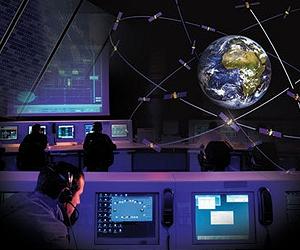Earliest known mariner’s astrolabe described in new study
Guinness World Records has verified that a mariner’s astrolabe recovered from the wreckage of a sunken Portuguese armada ship is indeed the earliest of its kind.
Researchers with the Warwick Manufacturing Group, WMG, part of the University of Warwick, used laser imaging technology to confirm the stone disk as a mariner’s astrolabe, or sea astrolabe, a device used to measure a ship’s latitude.
The ship from which the astrolabe was recovered was part of explorer Vasco da Gama’s second voyage to India, which took place between 1502 and 1503. Sea astrolabes were popular among Portuguese and Spanish explorers.
The device was recovered from the Sodré shipwreck site, named for the captain of the sunken ship, Vicente Sodré. The vessel sank in a storm off the coast of Oman in 1503.
The so-called Sodré astrolabe is the the only known astrolabe featuring a solid disk and a confirmed date and origin. It is also the only mariner’s astrolabe featuring Portugal’s royal coat of arms.
The high-definition images, captured by a portable 7-axis Nikon laser scanner, revealed 18 marks along the astrolabe’s limb. Spaced at uniform intervals, the 18 marks were used to measure the altitude, or declination, of the sun at noon.
“Using this 3D scanning technology has enabled us to confirm the identity of the earliest known astrolabe, from this historians and scientists can determine more about history and how ships navigated,” Warwick professor Mark Williams said in a news release. “Technology like this betters our understanding of how the disc would have worked back in the 15th century. Using technology normally applied within engineering projects to help shed insight into such a valuable artifact was a real privilege.”
Researchers described the record-setting sea astrolabe in the International Journal of Nautical Archaeology.
“Without the laser scanning work performed by WMG we would never have known that the scale marks, which were invisible to the naked eye, existed,” said David Mearns, a marine scientist and oceanographer with the shipwreck-recover group Blue Water Recoveries. “Their analysis proved beyond doubt that the disk was a mariner’s astrolabe. This has allowed us to confidently place the Sodré astrolabe in its correct chronological position and propose it to be an important transitional instrument.”
Related Links
GPS Applications, Technology and Suppliers
|
We need your help. The SpaceDaily news network continues to grow but revenues have never been harder to maintain. With the rise of Ad Blockers, and Facebook – our traditional revenue sources via quality network advertising continues to decline. And unlike so many other news sites, we don’t have a paywall – with those annoying usernames and passwords. Our news coverage takes time and effort to publish 365 days a year. If you find our news sites informative and useful then please consider becoming a regular supporter or for now make a one off contribution. |
||
|
SpaceDaily Contributor $5 Billed Once credit card or paypal |
SpaceDaily Monthly Supporter $5 Billed Monthly paypal only |
|

![]()
ESA joins with business to invent the future of navigation
Paris (ESA) Mar 12, 2019
The only thing more remarkable than how all of us are walking around with space-grade navigation capability and atomic clock timing precision in our pockets is how much we take all of this for granted. Satellite navigation has changed our lives, triggering a quiet revolution in our society and economy.
But it is easy to forget that satellite navigation is only a means to an end – that end being to provide positioning, navigation and timing (PNT) services to everyone. Quietly, PNT has evolved into … read more
